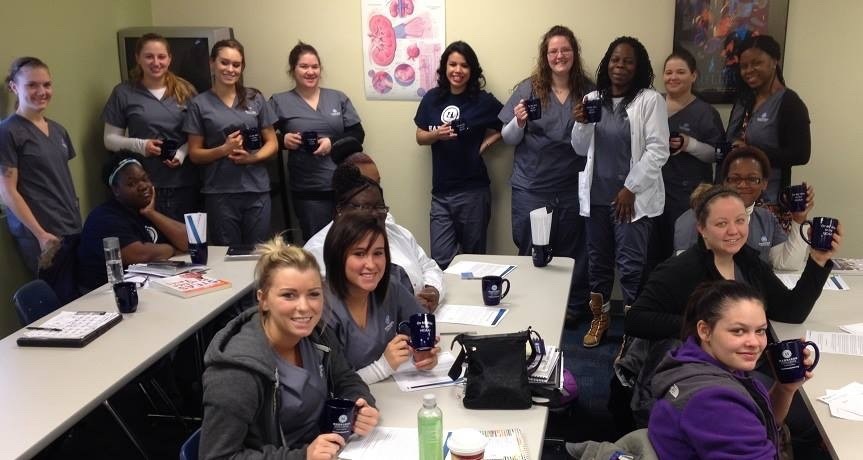Every hospital has at least a few of those doctors—the ones you dread calling or confronting in-person because they are unpleasant to interact with or simply do not listen to other members of the team. Communication between nurses and doctors is an ever-evolving challenge, and it is arguably one of the most important factors contributing to patient safety.
Why is effective communication so vital in healthcare?
Patients are often seen by numerous members of the medical team, and this is especially true in a hospital setting. While each member plays his or her own role, it is impossible to work in isolation, and ineffective communication can increase the risk of medical mistakes that lead to prolonged hospitalization or even unnecessary death.
Another benefit of clear, effective communication is that it helps to build trust and rapport among members of the medical team and between the patient and his or her caregivers. Patients feel more comfortable when they can see that their nurse and doctor are on the same page.
Take The Next Step In Your Nursing Career, Advance Your Education
What are some barriers to communication?
A number of variables contribute to the ability to effectively communicate in a medical setting. We’ll address a few of the main ones here.
Interprofessional dynamics
One of the main factors impacting communication breakdown in a hospital is the dynamic between the nurse and the physician. Some physicians may become overwhelmed and stressed, which negatively impacts their ability to listen. Others simply do not have respect other members of the medical team, which negatively impacts the way they interact with others. Nurses may feel they are being rushed into communicating information as quickly as possible, which can inadvertently result in communication breakdown.
Additionally, some nurses report feeling like they are not being “heard” or effectively listened to during their interactions with physicians. Others report being frequently interrupted. This really depends on the culture of the hospital and the personalities of the nurse and the physician. Regardless, they are all factors that can negatively impact communication and, in turn, negatively impact the patient.
Outside distractions and barriers
At times, the nurse and the doctor can both be effective communicators but still have difficulty getting the information across in a timely manner due to logistical issues. This includes factors such as the busyness of the unit.
Distractions, whether related to patients or other external factors, can impact an individual’s ability to effectively listen to and process information. This is especially true in a critical care unit. If your patient needs something, but the patient next door is about to code, the physician will have to address the more medically unstable patient first.
Another logistical factor that can impact communication is having difficulty getting into contact with the party you are trying to reach. This can happen with either the nurse or the doctor, as both are busy with their own responsibilities and may only have a single phone line. When numbers aren’t updated or pagers go unanswered, important information is missed.
Lack of communicative awareness
Some nurses, especially those who are newer to the field, are unsure of how to communicate information efficiently with other members of the medical team. Physicians can be intimidating, and this is particularly true for those who have a reputation of being disrespectful to others.
While there is no excuse for this type of behavior from a doctor, nurses can only control themselves and the manner in which they present information. Learning a structured form of communication can be helpful for planning out what you would like to say to the physician.
What are some strategies for improving communication?
Communication breakdown is bound to happen when there are numerous individuals working with the same patient. While occasional breakdown is inevitable, there are several strategies we can utilize to try to keep it to a minimum.
Using technology wisely
These days, our medical world is becoming more digital than ever before. From pagers to cell phones to messenger services, we now have multiple ways to get in touch with each other. One of the benefits of sending a message is that it can be read when the person is able to attend to it, and it leaves a timestamp of when the information was communicated.
Another great tool for communicating with physicians is documenting within the electronic medical record. Ensuring that your charting is clear and up-to-date can help physicians, and other members of the medical team, have quick access to information about your patient. While this doesn’t eliminate the need to notify someone when there is an emergency (or risk of an emergency), it helps with communication of less immediate issues.
Using a communication structure
One of the most popular structures used to communicate patient information with doctors is the SBAR strategy. This acronym stands for situation, background, assessment, and recommendation. Essentially, the nurse provides information regarding the patient’s current status, history, and plan of care. Then, the physician can make a decision on how to move forward with the patient.Structures like SBAR help prepare for physicians for the type of information to expect when receiving a report from a nurse. This structure also provides a framework for developing your own plan before initiating communication with the doctor.
Improving the culture
Hospital culture can play a huge role in communication breakdown. A lot of this comes down from leadership. It is important for leaders to curate an open-door environment in which members of the team know what to expect from one another. It’s crucial that leaders set good examples on how to communicate effectively with others on the team.
Additionally, hospital cultures need to be patient-centered and team-oriented. When the patient is put above hospital politics and individual egos, communication becomes more effective.
These tips may not provide all of the answers to communication breakdown, but they should help to prevent at least some of the difficulties in the medical setting. At the end of the day, we can only control our own actions and behaviors, which includes practicing positive forms of communication with patients, physicians, and other staff members.



